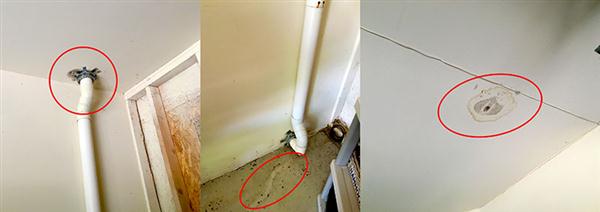Waukesha Radon - Radon System Leaking Water? How you can Tell and What you Should Do
RADON SYSTEM LEAKING WATER?... NOT REALLY.
Why would a radon mitigation system “leak” water? Well, it doesn’t actually leak water. It can however sweat and/or condensate. There are a few reasons this may be occurring. We’re currently in the “dog days” of summer and the temperatures are rising! With extreme heat come calls from people with condensating radon systems. Lifetime Radon Solution’s radon systems rarely sweat. We do get calls from people who have had other radon companies install their radon system.
One of the main reasons we’ve seen condensating radon systems is due to the type of pipe some installers use. Lifetime Radon Solutions uses what’s called schedule 40 PVC Cellular Core piping. PVC is polyvinyl chloride. It is the material that PVC pipe is made from. The “schedule” is the wall thickness of the pipe. It also is the designation of how much internal pressure and temperature extremes the pipe can withstand. Schedule 40 PVC is considered the “standard”. Schedule 80 PVC has even thicker walls and can withstand higher internal pressures. Schedule 20 PVC (which is typically the pipe we find where there are leaks and/or condensation) is the opposite; the walls of the pipe are much thinner (about 1/16”). Thinner schedule 20 PVC pipe sweats in the summer which is where the water leakage can come from. Moreover, Cellular Core piping is insulated helping to reduce the chance of condensation.

Most homes in South Eastern Wisconsin have basements. In most cases, our radon systems tap into your home’s drain tile from the basement. This cooler air is pulled up by the radon mitigation fan from below your homes foundation. The air from a basement is typically around 50 degrees, whereas the air in your attic and outside is significantly warmer. On a hot summer day, your attic can reach temperatures well beyond 100 degrees. This temperature change causes the thinner Schedule 20 PVC pipe to sweat and drip.
Another variable may be caused from too many bends in the piping running up from the basement and above the roof line. When a radon system has too many bends, it can cause turbulence in the air flow. Turbulence can create heat from tumbling air. When you combine the turbulence with hot summer heat and thin pipe it’s a recipe for a sweaty condensating pipe.
Why do other companies use schedule 20 PVC pipe over schedule 40 PVC knowing this could happen? Either they’re not aware this problem exists or it’s because it saves them money. At the end of the day, it is not a good solution for the long run and the changing seasons of Wisconsin.
 262-955-5701
262-955-5701




